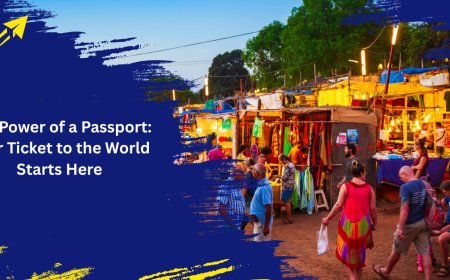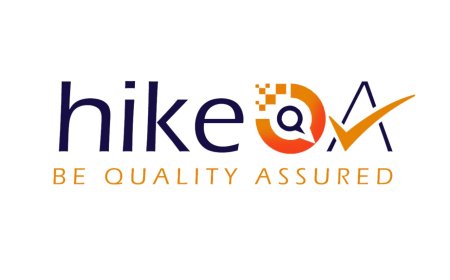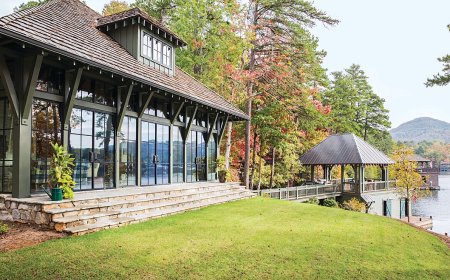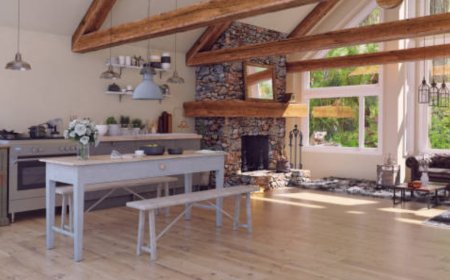How to Explore Font-Romeu Spring Winter
How to Explore Font-Romeu in Spring and Winter Font-Romeu-Odeillo-Via, nestled in the heart of the French Pyrenees, is a destination that transforms dramatically with the seasons. While many associate this high-altitude village with winter sports and snow-covered peaks, few realize that spring offers an equally compelling, yet quieter, experience. Exploring Font-Romeu in spring and winter requires
How to Explore Font-Romeu in Spring and Winter
Font-Romeu-Odeillo-Via, nestled in the heart of the French Pyrenees, is a destination that transforms dramatically with the seasons. While many associate this high-altitude village with winter sports and snow-covered peaks, few realize that spring offers an equally compelling, yet quieter, experience. Exploring Font-Romeu in spring and winter requires more than just packing warm clothes—it demands an understanding of the terrain, climate, cultural rhythms, and hidden gems that emerge only during these transitional periods. Whether you're a solo hiker seeking solitude, a family looking for off-season adventure, or a photographer chasing golden light over snow-dusted ridges, this guide will equip you with the knowledge to unlock the full potential of Font-Romeu during these two distinct yet interconnected seasons.
Unlike crowded alpine resorts that shut down after ski season, Font-Romeu thrives year-round. Its elevation of over 1,800 meters ensures reliable snowfall through winter, while spring brings a surprising burst of wildflowers, thawing rivers, and renewed wildlife activity. This duality makes it one of the few mountain destinations where you can ski in February and wildflower trek in April—all within the same valley. Understanding how to navigate both seasons effectively is not just about logistics; it’s about aligning your expectations with the natural rhythm of the Pyrenees.
This guide is designed for travelers who value authenticity over tourism. We’ll walk you through practical steps to plan your visit, highlight best practices for safety and sustainability, recommend essential tools and local resources, and share real examples from seasoned visitors. By the end, you’ll know not just how to explore Font-Romeu in spring and winter—but how to experience it deeply, respectfully, and memorably.
Step-by-Step Guide
Step 1: Choose Your Timing Within the Season
Spring and winter in Font-Romeu are not monolithic—they have distinct phases that dramatically alter the experience. Winter typically runs from late November to early April, but the quality of snow and accessibility of trails vary significantly between December, January, and March.
In early winter (late November–December), snowfall is still accumulating. Trails may be partially covered, and some higher-altitude routes remain closed. However, this is an ideal time for photographers seeking pristine, untouched landscapes and for those who prefer fewer crowds. The village itself is quiet, with most restaurants and shops operating on reduced hours.
Mid-winter (January–early February) offers the most consistent snowpack. This is when ski lifts operate at full capacity, and cross-country trails are fully groomed. Temperatures average between -5°C and 2°C, making it ideal for snowshoeing, Nordic skiing, and sledding. The village lights up with festive decorations, and local events like the “Fête de la Neige” often take place during this window.
Late winter (February–early April) brings longer daylight hours and milder temperatures. Snow begins to melt at lower elevations, revealing patches of earth and early spring blooms. This is the perfect transition for mixed-activity trips: ski in the morning, hike on snow-free trails in the afternoon. Avalanche risk decreases but remains present in steep, shaded zones.
Spring in Font-Romeu begins in earnest around mid-March and peaks in May. The first wildflowers—snowdrops, crocuses, and early gentians—appear in sheltered valleys by late March. By April, the lower trails (below 1,600m) become accessible for hiking, and the river Odeillo begins to swell with meltwater, creating dramatic cascades. Spring is also the season of returning wildlife: chamois descend from high ridges, and birds like the alpine chough become more visible.
Recommendation: For winter sports, aim for January–February. For spring exploration, target late March to mid-May. Avoid mid-April if you’re seeking deep snow, and avoid late November if you want full trail access.
Step 2: Plan Your Accommodation Strategically
Accommodation in Font-Romeu varies from luxury spa resorts to budget-friendly mountain huts. Your choice should align with your season and activity goals.
In winter, book well in advance—especially if you want ski-in/ski-out access. The Hotel des Pyrénées and Le Chalet du Lac are popular for their proximity to the Font-Romeu ski area. For a more authentic experience, consider staying in a traditional Pyrenean stone cottage in Odeillo, where you can enjoy wood-burning stoves and panoramic views.
In spring, many hotels begin transitioning to off-season rates. Some close entirely between April and May, so verify opening dates before booking. Smaller guesthouses like La Maison du Vigneron and Auberge du Ruisseau often remain open and offer personalized service. If you're planning multi-day hikes, consider staying in one of the refuges along the GR10 trail, such as the Refuge de l’Ayguelongue, which provides basic lodging and is accessible via snowshoe or early-season hiking.
Tip: Always confirm whether your accommodation includes breakfast and whether kitchen access is available. In spring, grocery stores may have limited hours, so self-catering options give you flexibility.
Step 3: Understand Transportation Options
Font-Romeu is accessible by car, train, or shuttle. The village is located in the Pyrénées-Orientales department, approximately 2 hours from Perpignan and 3.5 hours from Toulouse.
In winter, driving is the most reliable option. Roads are well-maintained, but snow chains are often mandatory on the D618 and D117 routes. Check the Préfecture website for real-time road conditions. Public buses run from Perpignan to Font-Romeu, but frequency drops significantly after 5 PM and on weekends. The “Navette Neige” shuttle service operates during peak ski season (mid-December to mid-March) between the train station and ski lifts.
In spring, the same roads are generally clear by late March, but patches of ice may linger in shaded areas. Public transport resumes its regular schedule, and bike rentals become available. Consider renting an e-bike in April to explore the valley’s lower trails with ease. The village is pedestrian-friendly, and most amenities are within a 15-minute walk.
Pro Tip: If arriving by train, book a transfer in advance. The nearest station is Font-Romeu-Odeillo-Via (TER line), but it’s 3 km from the village center. Taxis are limited, and ride-sharing apps like Uber do not operate here.
Step 4: Select Your Activities Based on Conditions
Font-Romeu offers a curated selection of seasonal activities. Choosing the right ones depends on snow depth, daylight, and personal fitness.
Winter Activities:
- Skiing and Snowboarding: The Font-Romeu ski area has 35 km of pistes, suitable for beginners and intermediates. The main lift, “Télécabine de l’Ayguelongue,” provides access to the highest point at 2,200m. For advanced skiers, off-piste routes near Pic de Bure require a guide and avalanche safety gear.
- Cross-Country Skiing: The 15 km of groomed tracks around Lac d’Odeillo are among the best in the region. Trails are marked by color: blue (easy), red (intermediate), and black (challenging). Morning light on the frozen lake is ideal for photography.
- Snowshoeing: Guided snowshoe tours depart daily from the Office de Tourisme. Popular routes include the loop around Lac des Bains and the ascent to Col de la Perdrix (2,000m), where you can spot ibex tracks.
- Ice Skating: A natural ice rink forms on Lac d’Odeillo when temperatures remain below -3°C for several days. Bring your own skates or rent them at the sports shop near the church.
Spring Activities:
- Hiking: Lower trails like the Sentier des Sources (near the village) and the path to the ruins of the Château de Font-Romeu open by late March. Bring waterproof boots—mud is common as snow melts.
- Wildflower Watching: April and May are prime for alpine blooms. Focus on the meadows near the GR10 trail between Font-Romeu and Odeillo. Look for the Pyrenean lily, edelweiss (rare), and the elusive snow crocus.
- River Trekking: The Odeillo River becomes more active in spring. Walk along its banks to witness meltwater carving new channels and forming small waterfalls. Avoid entering the water—currents are strong and cold.
- Photography: Spring offers dramatic contrasts: snow-capped peaks against green valleys, mist rising from thawing ground, and wildflowers framed by lingering snow patches. Golden hour (7–9 AM and 5–7 PM) is exceptional.
Recommendation: Combine winter and spring activities on the same trip. Ski in the morning, then hike a lower trail in the afternoon as the sun warms the slopes.
Step 5: Prepare Your Gear for Variable Conditions
Layering is non-negotiable. Temperatures can swing 15°C in a single day. In winter, thermal base layers, insulated mid-layers, and a waterproof, windproof shell are essential. Don’t forget insulated gloves, a neck gaiter, and a warm hat with ear coverage.
Footwear is critical. For winter, use crampon-compatible winter boots with a rigid sole. For spring, waterproof hiking boots with ankle support are ideal. Avoid sneakers—they offer no grip on wet rocks or icy patches.
Essential gear checklist:
- Headlamp with extra batteries (days are shorter in winter)
- Portable power bank (cold drains batteries faster)
- Compact first-aid kit (include blister treatment and antiseptic wipes)
- Reusable water bottle with insulation (hydration is key even in cold weather)
- Snacks: high-energy bars, nuts, dried fruit (no vending machines on remote trails)
- Map and compass (cell service is unreliable in valleys)
- Sunglasses with UV protection (snow glare is intense)
- Small backpack with rain cover
For spring, add: insect repellent (flies return with warmth), sunscreen (UV index rises quickly at altitude), and a lightweight rain jacket. Even in April, afternoon thunderstorms are common.
Step 6: Respect Local Regulations and Safety Protocols
Font-Romeu is part of a protected natural park. Many trails are marked with color-coded signs and seasonal closures. Always check the official website of the Parc Naturel Régional des Pyrénées Catalanes before heading out.
Winter avalanche safety: If venturing off-piste, carry a DVA (avalanche transceiver), probe, and shovel. Never travel alone. Local guides offer affordable half-day safety courses ($30–$50) that include practical training.
Spring wildlife protection: Do not approach or feed animals. Chamois and marmots are easily stressed. Stay on marked trails to protect fragile alpine flora. Some meadows are closed in April to allow wildflowers to bloom undisturbed.
Fire restrictions: Open fires are prohibited year-round. Use designated stoves in refuges. Even in spring, dry grass can ignite easily.
Leave No Trace: Pack out all trash—including food wrappers and biodegradable items. Human waste must be buried at least 60 meters from water sources.
Best Practices
Practice Seasonal Mindfulness
Font-Romeu’s beauty lies in its stillness. In winter, the silence is profound—only the crunch of snow underfoot and the distant call of a raven break it. In spring, the awakening is subtle: the trickle of meltwater, the flutter of a butterfly, the scent of damp earth. Resist the urge to rush. Slow down. Sit. Observe. The more you immerse yourself in the quiet rhythm of the mountains, the more they reveal.
Engage with the Local Community
Support local businesses. Buy cheese from the Fromagerie de Font-Romeu, coffee from Café des Pyrénées, and handmade wool scarves from the artisan cooperative near the church. Locals appreciate visitors who learn a few words of Occitan—“Bonjorn” (hello), “Merci” (thank you), “Quin es lo temps?” (What’s the weather?).
Plan for Weather Flexibility
Mountain weather changes rapidly. A clear morning can turn to fog by noon. Always have a backup plan. If a trail is closed due to snow or rockfall, pivot to a lower-altitude route. The village’s thermal baths, the Établissement Thermal de Font-Romeu, offer a perfect indoor alternative during storms.
Travel Light, But Pack Smart
Carrying too much weight on snowshoe or hike leads to fatigue and injury. Use a packing list and stick to it. Prioritize multi-use items: a buff can serve as a hat, neck warmer, and sweatband. A compact towel doubles as a picnic blanket.
Respect Cultural Heritage
Font-Romeu has roots in medieval monastic life. The 12th-century Saint-Martin Church and the nearby Romanesque chapel of Sainte-Croix are sacred spaces. Dress modestly, speak quietly, and never enter during services. These sites are not tourist attractions—they are living places of worship.
Monitor Your Physical Limits
Altitude sickness is real. Font-Romeu sits at 1,800m, and many trails climb above 2,000m. Symptoms include headache, nausea, dizziness, and shortness of breath. If you feel unwell, descend immediately. Hydrate well, avoid alcohol, and allow 24–48 hours to acclimatize before strenuous activity.
Photograph Responsibly
Don’t trample flowers or disturb wildlife for the perfect shot. Use a telephoto lens to capture animals from a distance. Avoid flash photography near nesting birds. Share your images with local tourism boards—they often feature visitor content on official platforms.
Tools and Resources
Official Websites
- Office de Tourisme de Font-Romeu: www.font-romeu.com – Trail maps, event calendars, and opening hours for all facilities.
- Parc Naturel Régional des Pyrénées Catalanes: www.parc-pyrenees-catalanes.fr – Official trail closures, wildlife alerts, and conservation notices.
- Météo-France Alpine Forecasts: meteofrance.com – Detailed mountain weather for Font-Romeu and surrounding peaks.
Mobile Apps
- Maps.me: Offline maps with trail markers, refuges, and points of interest. Works without cell service.
- Alpine Club France (Club Alpin Français): Real-time trail conditions and avalanche bulletins updated daily.
- AllTrails (Pro version): User reviews and photos of spring wildflower trails. Filter by “elevation gain” and “snow cover.”
- Windfinder: For wind speed and direction at high altitudes—critical for skiing and photography.
Local Guides and Operators
- Pyrenees Active: Offers guided snowshoeing, winter photography tours, and spring wildflower walks. English-speaking guides available.
- Font-Romeu Ski School: Provides group and private lessons for all levels. Includes avalanche safety training.
- La Maison des Guides: Small, family-run guiding service specializing in multi-day treks along the GR10. Book early—only 6 spots per week.
Books and Publications
- “Walking the Pyrenees: The GR10 Trail” by David Robinson – Comprehensive trail guide with seasonal tips.
- “Flowers of the Pyrenees” by Jean-Louis Dumas – Illustrated field guide to 200+ alpine species.
- “The Silent Mountains: Life in the High Pyrenees” by Marie-Claire Lefebvre – Cultural history of Font-Romeu and surrounding villages.
Equipment Rental Shops
- Location de Matériel Sportif Font-Romeu: Located near the ski lift. Rent skis, snowshoes, avalanche gear, and winter boots. Daily rates: $25–$40.
- Bike & Hike Font-Romeu: Offers e-bikes, hiking poles, and hydration packs. Open year-round.
Real Examples
Example 1: The Solo Photographer’s Spring Journey
Marie, a landscape photographer from Lyon, visited Font-Romeu in late April. She arrived on a weekday, stayed at a quiet guesthouse, and spent five days hiking lower trails. Her goal: capture the contrast between lingering snow and emerging wildflowers.
She used a wide-angle lens to photograph the snow-dusted ridge of Pic de Bure behind a field of yellow primroses. Early mornings, she hiked to the edge of Lac d’Odeillo to capture the mist rising as the sun hit the water. One morning, she spotted a family of marmots emerging from their burrow—she waited 45 minutes, motionless, and captured the moment they sunbathed on a rock.
Marie shared her photos on Instagram with the hashtag
FontRomeuSpring. The Office de Tourisme featured her work on their website. She returned the following year with a workshop group.
Example 2: A Family’s Winter Escape
The Dubois family from Bordeaux visited Font-Romeu in mid-January with their two children, aged 7 and 10. They booked a chalet with a fireplace and enrolled the kids in a two-day ski school program.
Each morning, they skied together on the green runs. Afternoons were spent building snowmen, sledding on the hill behind the hotel, and enjoying hot chocolate at the café near the church. On their third day, they joined a guided snowshoe tour to see the frozen waterfalls near the Odeillo River.
“We thought it would be too cold,” said Sophie Dubois. “But the village felt alive. Everyone was smiling. The kids didn’t want to leave.”
Example 3: The Solo Hiker’s Transition
Lucas, a 32-year-old from Marseille, arrived in Font-Romeu on March 15. He planned a 10-day trip: first five days skiing, next five hiking.
On day 6, he hiked the trail to the Château ruins. Snow still covered the higher sections, but the lower path was muddy and fragrant with damp pine. He met an elderly local, Jean, who told him stories of the village during the 1950s—how the ski lift was built by hand, how the church bell rang every morning to call workers to the fields.
“I came for the snow,” Lucas wrote in his journal. “I left with the stories.”
Example 4: The Winter Photographer’s Challenge
Anna, a professional photographer from Berlin, attempted a time-lapse sequence of the sunrise over Font-Romeu’s ski slopes in February. She set up her tripod at 4:30 AM, but a sudden snowstorm hit by 6 AM. She stayed, wrapped in thermal gear, and captured 12 hours of shifting light—snow falling, clouds parting, the first rays hitting the church steeple.
Her video, “Font-Romeu in the Stillness,” went viral on Vimeo. It was later screened at the International Mountain Film Festival in Grenoble.
FAQs
Is Font-Romeu worth visiting in spring if I love snow?
Yes—but manage expectations. Snow persists at higher elevations (above 2,000m) until late April. Lower trails are snow-free, but you can still ski in the morning and hike in the afternoon. The combination of snow and wildflowers is unique and photogenic.
Are the ski lifts open in early spring?
Typically yes, until mid-April. Check the official website for exact dates. Some lifts close earlier if snowpack is low. The Télécabine de l’Ayguelongue usually operates until April 15.
Can I hike in Font-Romeu in December?
Only on marked, low-altitude trails. Most higher trails are closed due to snow and avalanche risk. The Sentier des Sources and the path to the thermal baths are accessible. Wear crampons if ice is present.
Do I need a visa to visit Font-Romeu?
If you’re from the EU, no visa is required. For non-EU visitors, a Schengen visa is necessary. Check your country’s requirements well in advance.
Are pets allowed on trails?
Dogs are permitted on most trails but must be leashed. In protected zones (like the Parc Naturel), dogs are prohibited from April to June to avoid disturbing nesting birds. Clean up after your pet.
Is there internet access in the village?
Yes, most hotels and cafés offer Wi-Fi. However, connectivity is weak in valleys and on trails. Download maps and guides before arriving.
What’s the best time of day to photograph Font-Romeu?
Golden hour—just after sunrise and just before sunset—is unmatched. In winter, the low sun casts long shadows over snow, creating dramatic textures. In spring, the light is softer and warmer, ideal for wildflower close-ups.
Can I camp in Font-Romeu during winter?
No. Wild camping is prohibited year-round in the national park. Use designated accommodations only.
Is there a supermarket open on Sundays?
Yes, the Carrefour Market in the village center is open Sunday mornings (8 AM–1 PM) year-round. Smaller shops may be closed.
What’s the local currency?
Euro (€). Credit cards are widely accepted, but carry cash for small vendors, refuges, and parking meters.
Conclusion
Exploring Font-Romeu in spring and winter is not merely a travel itinerary—it’s a dialogue with the mountains. It demands patience, preparation, and reverence. Whether you’re gliding across a frozen lake under a winter sky or wandering through a meadow where the first wildflowers dare to bloom, you are stepping into a rhythm older than tourism, deeper than sport.
This guide has provided the tools, the timing, the trails, and the traditions that make Font-Romeu unforgettable. But the real journey begins when you leave the checklist behind and let the landscape speak. Listen to the silence between the snowflakes. Watch how the light changes as the sun climbs over the ridge. Notice the way the wind carries the scent of pine and earth after a thaw.
Font-Romeu does not yield its secrets to the hurried. It rewards those who arrive with open eyes and quiet hearts. Whether you come for the snow or the spring blooms, for the thrill of the descent or the stillness of the ascent—you will leave changed.
Go not to conquer the mountains, but to learn from them.





































